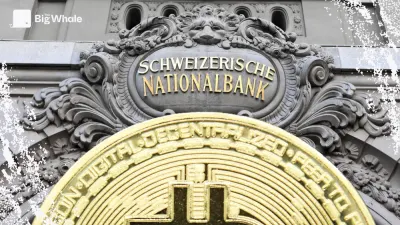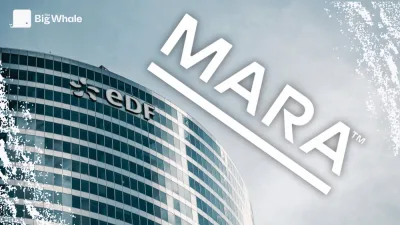TBW - Ethereum: What is the business model for layer 2?

An analysis of recent trends reveals a major structural issue in the blockchain ecosystem: the scalability of layer 1s. Faced with the growing adoption of decentralised applications (dApps) and NFTs, these fundamental infrastructures are showing their limits.
The data speaks for itself: saturation of layer 1 networks is leading to an inflationary spiral in transaction fees, creating a real brake on the mass adoption of blockchain technology. A particularly striking case occurred in 2022, when Ethereum users had to pay up to $197 for a single transaction - a prohibitive amount that perfectly illustrates the scale of the challenge.
.png)
The emergence of layer 2 solutions marks a decisive turning point in the evolution of the blockchain ecosystem. Faced with the structural limitations of the main networks, these protocols are positioning themselves as catalysts for innovation, offering increased scalability while maintaining competitive transaction costs.
Analysis of their development reveals increasing sophistication in their business models. These platforms have been able to build autonomous financial ecosystems, skilfully articulating their revenue streams with their cost structures, while establishing profit distribution mechanisms that reflect their vision of decentralisation.
What is a layer 2?
In a context where scalability is becoming a major issue for the blockchain industry, layer 2 solutions are emerging as an innovative response to the limitations of core networks. These protocols, operating in symbiosis with blockchains such as Ethereum, represent a significant evolution in the architecture of decentralised systems.
The analogy is telling: layer 2s act as sophisticated intermediaries, optimising the use of blockchain space. By relocating transaction processing to parallel infrastructures, they manage to leverage the capacities of the main networks while preserving their secure integrity.
Our analysis of the technological landscape reveals three distinct approaches:
- Rollups are positioned as the most promising solution, with two major variants: Optimistic Rollups, favouring simplicity of implementation, and ZK-Rollups, banking on the power of cryptographic proofs to guarantee data integrity.
- Sidechains take a more autonomous approach, developing their own consensus mechanisms while maintaining a vital link with the main blockchain.
- State channels, meanwhile, represent a more specialised solution, particularly suited to repeated interactions between identified parties.
Layer 2 business model: sources of revenue
Transaction fees
Layer 2's main source of revenue is the transaction fees paid by users for each transaction carried out on layer 2. These fees cover the cost of executing transactions on L2 and the cost of publishing aggregated data on L1. By recovering a share of these fees, layer 2 operators can finance themselves.
Each transaction processed on an L2 generates revenue, even if the individual fees are lower than on the L1. The high frequency of transactions and the aggregation of fees enable layer 2s to maintain profitability. The technologies used, such as Optimistic Rollups and ZK-Rollups, influence the cost structure and therefore the revenue model, with each technology having specific data validation and publication requirements.
As a result, Layer 2s are remunerated through the accumulation of small fees applied to each transaction, which on a large scale supports the financial viability of their business model.
For example, according to data from Token Terminal, Arbitrum, one of the most widely used layer 2s on Ethereum, generated $59.3 million in revenue over the past year from transaction fees paid on its platform.
.png)
Staking and security
Staking is essential to the security of certain layers 2, particularly those using Optimistic Rollups. Validators lock tokens as collateral, which encourages them to act honestly. In the event of fraud, they risk losing their stake, thus ensuring the integrity of the network.
Economically, staking generates rewards for validators, often from transaction fees or in the form of native tokens. This dynamic creates a virtuous circle: it promotes security, strengthens user confidence and stimulates activity on layer 2, thereby increasing ecosystem revenues.
In addition, by reducing the supply in circulation, staking can increase the value of tokens, attracting more investors and strengthening the ecosystem.
Token issuance
The issuance of native tokens is a key element of the layer 2 business model, combining initial funding, economic incentives and community engagement. For example, Polygon uses its POL token (formerly MATIC) to cover transaction costs and reward validators as well as active network participants.
At launch, these tokens are used to raise funds by being sold to initial investors prior to their introduction on secondary markets. This attracts investors, seduced by the tokens' valuation potential. For example, layer 2 Ethereum Morph successfully raised $20 million in a seed round in March 2024, backed by major players such as Pantera Capital and Dragonfly Capital, with a pre-valuation of $200 million.
Subsequently, layer 2s exploit their tokens as a direct source of revenue. Users must hold them and use them to pay transaction fees, ensuring continued demand and active circulation of tokens.
Beyond their economic role, layer 2 tokens strengthen community engagement. They offer governance rights and, in some cases, allow direct or indirect exposure to revenues generated by the network. For example, Optimism uses its OP token to involve its community in strategic decisions, such as technical evolution or resource allocation.
Revenues collected by the sequencer or other layer 2 activities can be redistributed to the community via decisions taken by governance. For example, token holders can vote to decide whether revenues should be reinvested in development, distributed as rewards or used to fund ecosystem projects.
Subsidies and funding
Layer 2s benefit from subsidies and funding, particularly during their launch phases. The Ethereum Foundation, for example, provides grants to support scalability initiatives, helping layer 2s to grow, attract developers and strengthen their technological infrastructure.
At the same time, many layer 2s are attracting significant funding from investment funds and VCs, seduced by their potential in the blockchain ecosystem. These funds are being used to finance the research, development, marketing and infrastructure required for their expansion. For example, projects such as Optimism and Arbitrum have raised private funds to accelerate their growth and position themselves as leaders in scalability.
Revenues from the sequencer
The sequencer is a fundamental pillar of the layer 2 business model, playing a central role in organising and aggregating transactions. It groups user transactions into "batches", compresses them and then transmits them to layer 1 for final validation. This process reduces the number of transactions to be entered on the main chain, thereby reducing transaction costs and speeding up processing times.
Depending on the type of layer 2, sequencers can be centralised, decentralised or shared. For example, Arbitrum and Optimism use centralised sequencers for fast and efficient execution, but this centralisation comes with risks, such as single points of failure or censorship risks. In contrast, decentralised sequencers distribute responsibilities across multiple nodes, offering greater security and transparency, but at a potentially higher cost. Shared sequencers, such as Espresso, represent a hybrid approach that pools infrastructure between several layer 2s, reducing costs and facilitating interoperability between networks.
The sequencer generates revenue for the layer 2s by collecting a share of the transaction fees paid by users. These fees cover the processing of transactions on layer 2 and part of the publication costs on layer 1. For example, Base, Coinbase's layer 2, has generated more than 26,000 ETH since its launch thanks to revenues from its (Dune) sequencer.
In decentralised governance models, token holders often influence the allocation of sequencer revenues via votes, guaranteeing collective and transparent management of funds. In summary, the sequencer is not only essential for the technical operation of layer 2s, but is also a major source of revenue, directly linked to the economic sustainability and growth of these networks.
The costs of L2s
The economic model of layer 2s also includes specific costs linked to their operation. These costs vary depending on the type of technology used and the methods of processing and securing transactions.
Publication costs
The cost of publishing data is a major burden for layer 2s, as each transaction must be summarised and recorded on the main blockchain (L1).
Optimistic Rollups publish data with a challenge period to challenge possible fraud, while ZK-Rollups use cryptographic proofs, reducing the need for challenge but increasing computational costs.
The impact of these costs can be illustrated by the example of Arbitrum. Indeed, according to Foresight News and Token Terminal data, Arbitrum, one of the most popular layer 2s, generated $72.8 million in revenue in 2023 from transaction fees. However, $53.2 million of this was used to cover publication costs on Ethereum. These costs are directly attributed to ETH holders and not ARB token holders, highlighting the importance of these expenses to L2 operations.
However, the introduction of EIP-4844 on Ethereum during the Dencun update on 13 March 2024 marked a significant step forward in reducing publication costs. Thanks to its "blobs" technology, this update optimised the processing of compressed data, thus improving the efficiency and profitability of layer 2.
Proof cost
Proof cost represents the resources required to guarantee the validity of transactions before or after they are published on layer 1.
This includes expenses in computation, time and economic opportunity. In the case of Optimistic Rollups, no immediate proof is required for each transaction. However, a challenge period is required, during which network players must monitor and challenge any fraudulent transactions. This mechanism incurs infrastructure costs to monitor and manage these challenges, as well as an opportunity cost due to the extended delay in finalising transactions.
In contrast, ZK-Rollups rely on cryptographic proofs to validate each transaction before it is published. Although this method ensures better security and rapid finalisation, it relies on complex algorithms requiring high computing power. This leads to higher operational costs.
Cost of congestion and computation
The cost of congestion and computation is another important factor. During periods of high activity, layer 2s face greater congestion, which can lead to higher charges for access to L1 blocking space.
In addition, operators must have a high-performance hardware infrastructure to process transactions quickly, which increases operating costs, particularly in terms of energy consumption and computing power. Periods of congestion particularly impact Optimistic Rollups, where delays can lengthen and fees can rise as the fee market adjusts prices to regulate demand.



